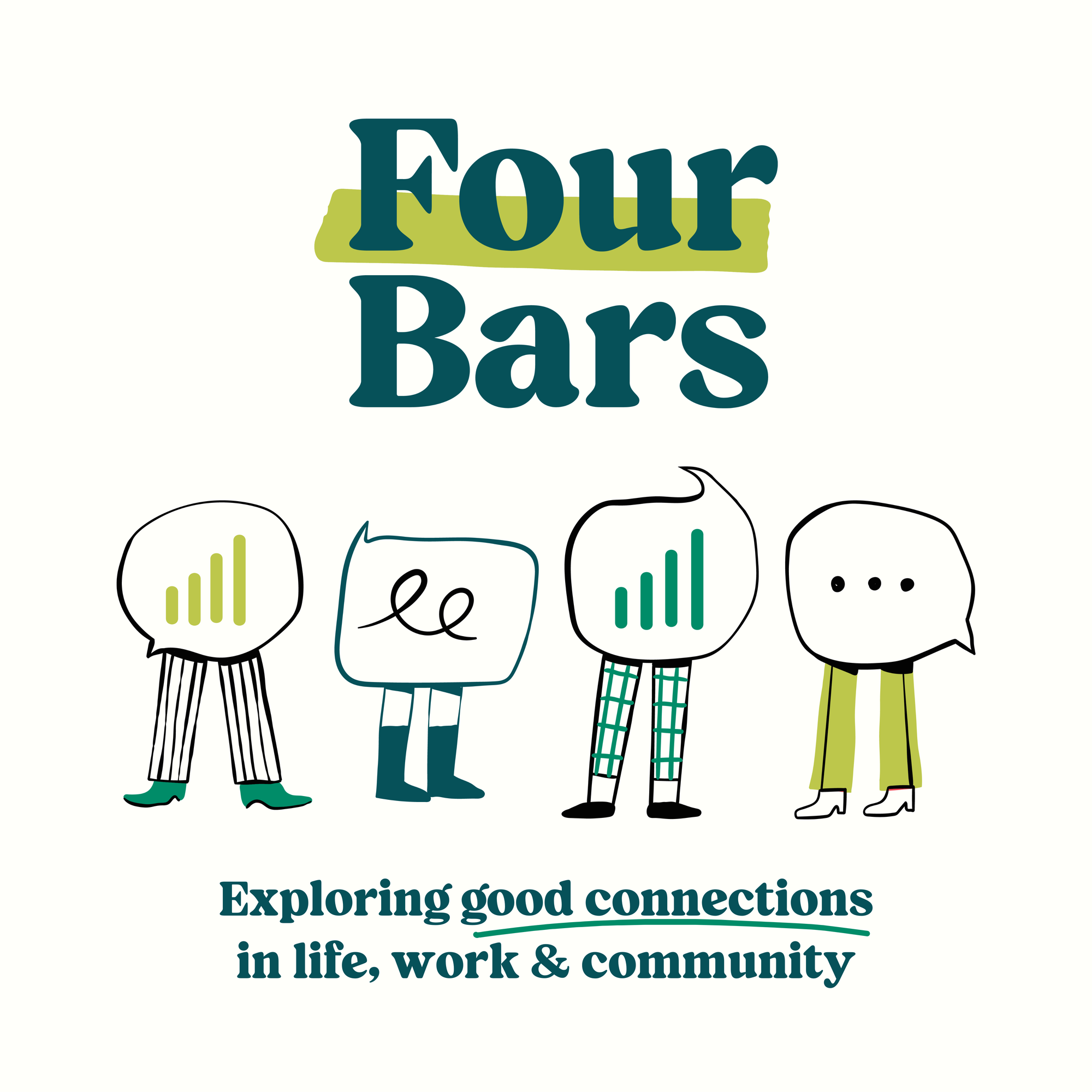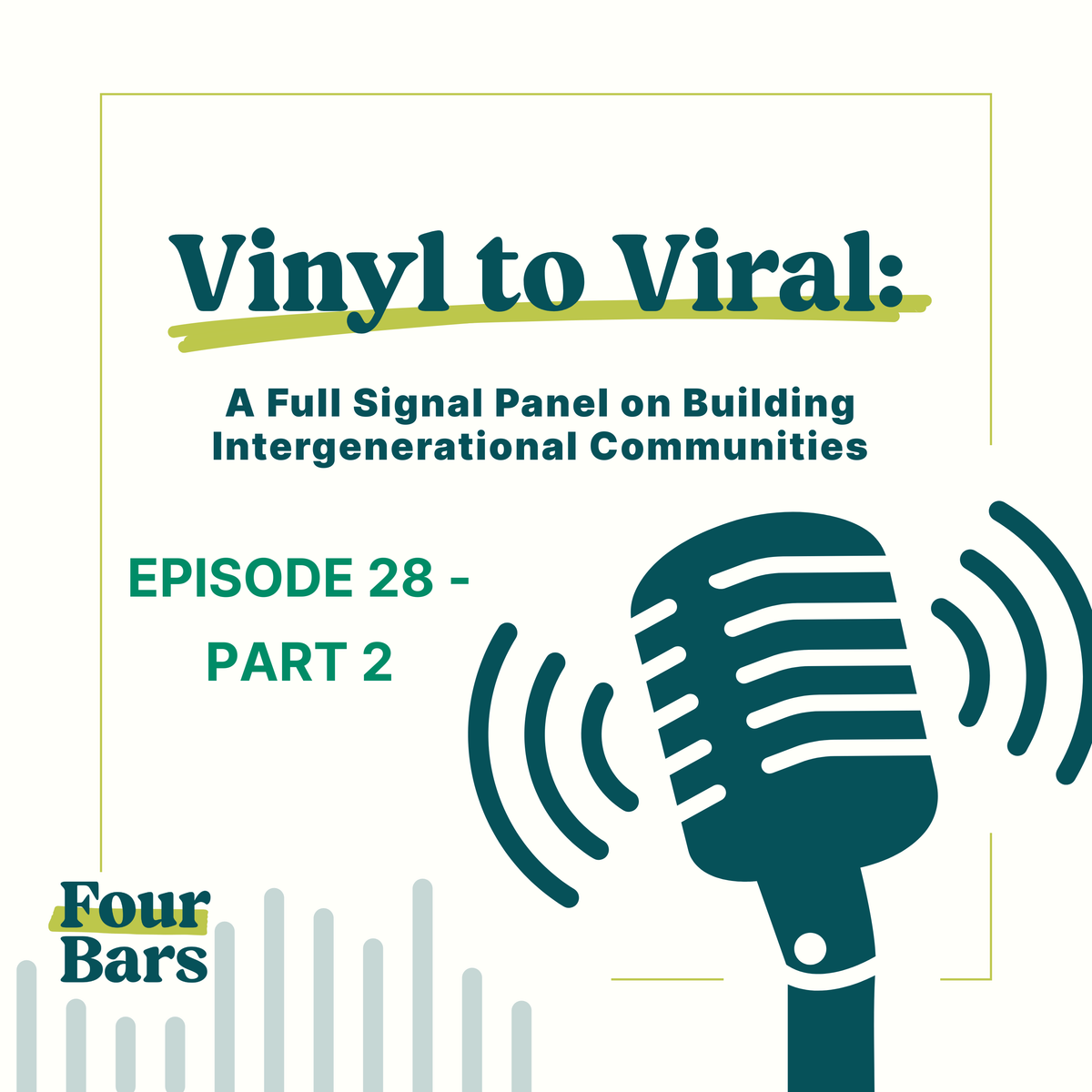Searching for a stronger signal in your relationships than on your phone? We sit down with a multigenerational panel, from a Gen Z builder of virtual villages to a family physician who’s practiced for fifty years, to unpack what actually creates belonging across age, tech, and time. The through-line is simple and surprising: depth happens when we schedule community with the same urgency we chase notifications.
We begin with the roots of connection shaped by upheavals, World War II, the Vietnam War, 9/11, and COVID, and explore how those eras formed habits of resilience, service, and community life. A boomer recalls El Paso blocks where any kitchen fed any kid, while a Gen X'er explains the pragmatic career ladder that once defined success. A veteran shows how the military doubled as an education and a crucible. Then Gen Z brings clarity to the pandemic divide: video games and TikTok held friendships together, but the moment the doors opened, long drives replaced laptops because bodies need shared spaces to feel seen.
Technology isn’t the enemy or the answer; it’s a tool. We trade MapQuest memories for late-night meme exchanges and learn to read those pings as bids for connection. We also make a case for analog anchors: handwritten notes that cut through crowded inboxes, monthly letters that slow the scroll, and third spaces, libraries, parks, maker labs, faith halls, where different ages collide and ideas cross-pollinate. The panel champions men’s covenant groups, neighborhood rituals, and family storytellers as the glue that holds a community’s memory in place.
You’ll leave with practical ideas to build intergenerational community: mix your rooms on purpose, pair digital ease with tangible rituals, and put storytelling back at the center. If this conversation sparks a plan for your block, your team, or your circle, subscribe, share the show with a friend, and leave a review with one tradition you’ll revive this week.
Follow and stay connected:
Website: fourbarspodcast.com
YouTube: youtube.com/@FourBarsPodcast
Instagram: @edges_Inc
Facebook: EDGES Inc.
LinkedIn: EDGES Inc.
Never miss an update—follow, subscribe, and join the conversation!
More About this Episode
Bridging the Generations: How Connection, Technology, and Storytelling Shape Community Today
In a world where “four bars” of Wi-Fi or cell service often define whether we feel connected, it’s easy to forget that human connection requires just as much, if not more, intentional effort. But what if we worked as hard to build strong, intergenerational relationships as we do to find a good signal? That’s the core question that drove a recent panel conversation featured on The Four Bars Podcast, where people of multiple generations gathered to explore what connection, community, and shared wisdom look like in our shifting cultural landscape.
Rather than offering a surface-level recap, this conversation opened deep insights into how generations shape the way we relate to each other, and more importantly, how we can bridge divides between us. From stories of growing up in post-WWII America to the impacts of COVID-era isolation, from handwritten letters to TikToks, the dialogue revealed a common thread: our longing for authentic connection and the wisdom that emerges when we make space for each other’s perspectives.
Let’s dig into the key themes and takeaways that emerged, and explore how they can guide us in building stronger, more connected communities today.
1. Connection Begins with Intentionality
Jim, a physician with nearly five decades of practice in family medicine, spoke powerfully about how his generation’s experience, shaped by World War II and the upheavals of constant relocation, led him to intentionally choose a life rooted in long-term relationships. His passion for establishing community wasn’t accidental; it was a conscious choice formed by the instability of his early life.
He pointed out that while humans are inherently communal (he even humorously referenced chickens as an example), the depth of our connection often suffers because we stay within the comfortable boundaries of our age groups. That’s where intergenerational community becomes vital.
Jim emphasized the importance of being intentional in seeking those relationships. For him, it meant forming a 45-year-long men’s group, a soul-deep connection that he described as a “covenant relationship.” His message was clear: long-term community doesn’t just happen. It’s built through deliberate choices and shared experiences over time.
SEO Keywords: intentional community building, intergenerational relationships, long-term friendships, building community, human connection
2. The Power and Limits of Technology
While older generations have witnessed the rise of modern technology as a seismic shift, younger generations like Gen Z were born into it. For Malia, technology isn’t something to adapt to, it’s the air she breathes. But that doesn’t mean it fulfills all needs.
She shared how, during COVID-19, digital tools became essential. Games like Minecraft served as safe havens for connection and creativity, helping her and her friends stay emotionally close despite physical separation. Yet, as soon as lockdowns lifted, they abandoned the screen in favor of road trips and in-person connection.
Why? Because a digital connection alone couldn’t fulfill the human need for community. “Even though that game gave us connection all of the time, we were still lonely,” Malia explained. Her story reflects a profound truth: technology is a tool, not a replacement, for real human interaction.
Other panelists echoed this. Millennials, for example, straddle a unique divide; they remember MapQuest and handwritten notes but also fully embrace digital life. That dual perspective offers a powerful opportunity for bridge-building, as they often translate between the analog and digital worlds.
SEO Keywords: technology and community, Gen Z and connection, COVID isolation, digital communication, tech and loneliness
3. Rediscovering the Value of the Handwritten Note
In an age of emails and Slack messages, Jim reminded us of something timeless: the handwritten letter. He shared a story about writing to then-Governor Bill Clinton, not as a supporter but as someone moved by his concession speech. Clinton responded with a four-page handwritten letter.
The message was simple yet profound: the human touch of ink on paper still matters.
That resonated deeply with Malia, who keeps a shoebox of letters from loved ones. She and her friends even opt for snail mail to escape the fatigue of constant digital pings. In a society flooded with instant communication, these gestures stand out precisely because they take more time.
This isn’t just nostalgia, it’s neuroscience. Studies show that receiving handwritten notes triggers emotional engagement and strengthens bonds. It’s a form of communication that asks more of us, and in return, it delivers more.
SEO Keywords: handwritten notes, emotional connection, analog communication, power of writing, human touch
4. Growing Up in Different Worlds, Yet Wanting the Same Things
Each generation has its defining context, whether it’s war, economic struggle, or cultural change, and those experiences shape how we build community. For example, Ray, who grew up during the 1960s in El Paso, described a neighborhood where kids roamed freely and were welcomed into each other's homes like extended family. That kind of organic, place-based connection is something he feels is largely missing today, especially in fast-paced urban environments where neighbors rarely know each other.
In contrast, Gen X panelist Lee described her generation’s relationship with education and career as defined by grit and linear thinking. College wasn’t optional; it was seen as the only path to success. That worldview drove many into practical, if not passion-fueled, careers. It shaped a sense of duty, one that now rubs against the more fluid, purpose-driven approach of younger generations.
Still, these different pathways all reflect a common desire: to find meaning, to belong, and to contribute. What changes is how each generation seeks those outcomes.
5. Storytelling: The Original Social Network
Perhaps the most unifying idea came toward the end of the discussion: storytelling. As Jim and other panelists noted, stories are the connective tissue between generations. Whether it's a family legend (like the infamous Uncle Frank who floated into trees after being struck by lightning) or a simple tale of love set to a Dean Martin song, stories carry values, humor, resilience, and identity.
In a time where algorithms decide what content we see, storytelling remains a deeply human act. It invites reflection, empathy, and imagination. It’s how we pass down not just information, but wisdom.
As one panelist put it: “Where are our storytellers?” That question isn’t rhetorical; it’s a challenge. In workplaces, families, schools, and communities, we need to lift the role of the storyteller, ensuring our collective memory isn't lost in a sea of scrolling feeds.
SEO Keywords: power of storytelling, family legacy, cultural memory, storytelling and connection, intergenerational wisdom
6. Building the Future Together: Learning Across Life Stages
One of the most striking themes in the conversation was mutual learning. Older generations often express frustration at younger generations' seeming detachment from traditional social cues or institutions. Yet, when they listen, really listen, they find rich insights.
Whether it’s a Gen Z teenager explaining that TikToks are expressions of ideas and not just time-wasters, or a millennial learning to appreciate that her younger sibling’s version of bonding looks different, these small adjustments create big ripples in how we relate.
The goal isn't assimilation. It’s understanding. It’s about recognizing that every generation brings unique strengths — and when we engage across life stages, we gain more complete perspectives on what it means to be human.
SEO Keywords: cross-generational learning, empathy across generations, Gen Z and millennials, workplace diversity, multigenerational teams
Conclusion: Building Stronger Connections Starts With Showing Up
The Four Bars Podcast reminds us that community isn't something we inherit — it's something we build. And building it across generations requires curiosity, effort, and grace. It means embracing technology while honoring analog traditions. It means being intentional in our relationships, listening deeply, and passing on our stories.
In a time when polarization and isolation are on the rise, this kind of intergenerational dialogue is not just refreshing — it’s necessary. Because whether you're sending TikToks at 3 a.m. or writing letters by candlelight, the human need for connection never changes.
And if we work just a little harder to find “four bars” of connection with each other, we might just build communities that truly last.



Member discussion: